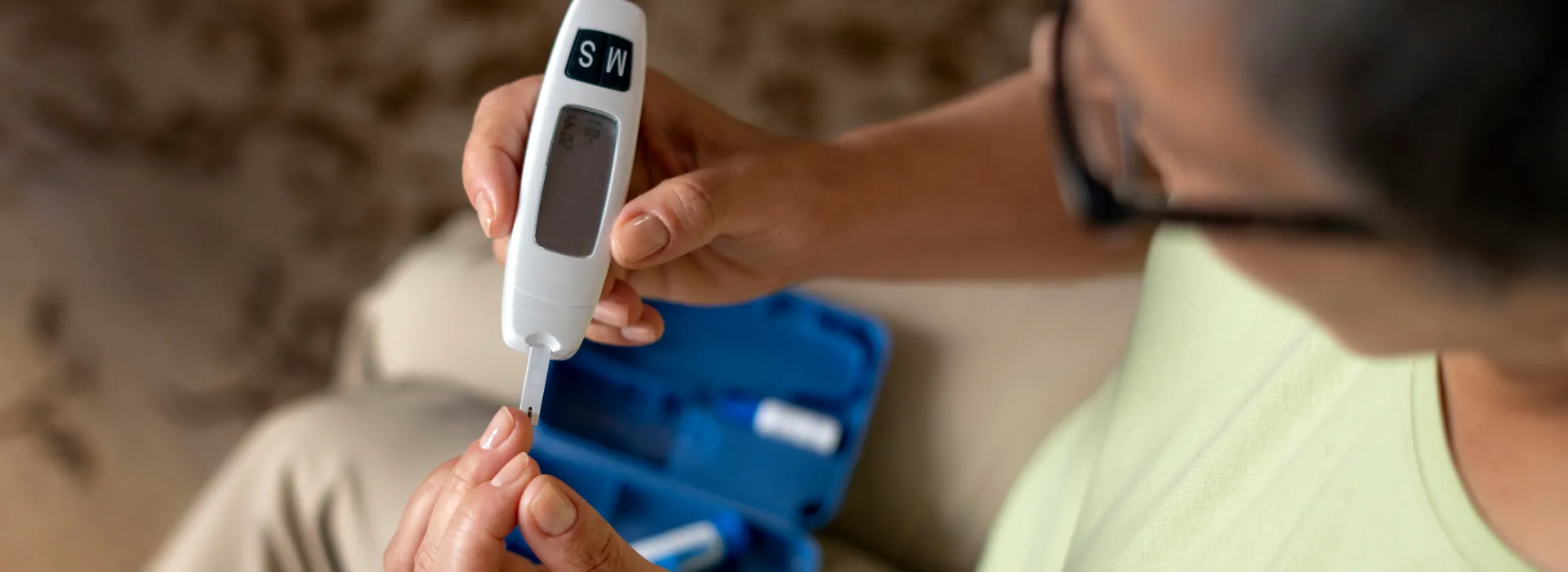How to understand my blood sugar levels? A GP’s guide
Written by Dr Nelson Lau, MBBS FRACGP, GP & Digital Health Specialist.

Contents

How do you calculate your blood sugar level?
Think of your blood sugar like the fuel gauge in your car—it shows you how much glucose (a type of sugar) is in your blood. We measure this in millimoles per litre (mmol/L). To check it, you use a glucose meter, which just requires a tiny finger prick for a drop of blood. You then simply put that drop of blood on a test strip, place it into the meter, and it’ll give you a reading.Feeling sick and unsure why? Speak with a GP online in 15 minutes.
What is a normal range for blood sugar?
The "normal" range can vary depending on factors like your age and when you last ate. But for most adults, a fasting blood sugar level (before eating) should be between 3.9 and 5.6 mmol/L (W.H.O). After meals, it can rise to 7.8 mmol/L or less. If you're over 60, your normal range might be a bit higher, as the body’s ability to regulate blood sugar gets a little less efficient with age. If you have diabetes, your doctor will work with you to set an individualised target range.What do the numbers on a blood sugar meter mean?
Your blood sugar meter is like your body’s way of communicating with you. Lower readings (under 3.9 mmol/L) mean your blood sugar is too low (hypoglycaemia). This can make you feel shaky, sweaty, or confused. On the other hand, higher numbers (over 11.1 mmol/L) indicate your blood sugar is too high (hyperglycaemia), which, over time, can increase the risk of serious conditions like heart disease, kidney problems, and nerve damage.What happens when my blood sugar levels are outside these ranges?
If your blood sugar is frequently outside the normal range, it might indicate a problem. High blood sugar levels could point to pre-diabetes or diabetes, meaning your body isn’t producing enough insulin or isn’t using it efficiently. On the flip side, low blood sugar, although less common, can be due to things like certain medications or even excessive alcohol.What causes inconsistent blood glucose levels?
Your blood sugar naturally fluctuates throughout the day. Here are some things that can affect it:- What you eat: Carbs and sugary foods spike your blood sugar faster than proteins or fats.
- Meal timing: Skipping meals or eating irregularly can throw off your blood sugar balance.
- Activity levels: Exercise helps your body use glucose for energy, lowering blood sugar levels.
- Stress: Stress hormones can cause a rise in blood sugar.
- Medications: Some drugs can have an impact on your blood sugar.
- Illness: Being sick can also cause blood sugar levels to rise.
What tests should be done?
If you're concerned about your blood sugar, your GP can order tests like:- Fasting blood glucose test: Measures blood sugar after an overnight fast.
- Oral glucose tolerance test (OGTT): You drink a sugary solution, and your blood sugar is measured over a few hours to see how well your body handles it.
- HbA1c test: This gives a snapshot of your average blood sugar levels over the past 2-3 months.
When would I need a blood glucose test?
Your GP might suggest a blood glucose test if you're experiencing symptoms like:- Increased thirst and urination
- Unexplained weight loss
- Blurred vision
- Slow-healing sores
- Frequent infections
- Tingling or numbness in your hands or feet
How do I prepare for a blood glucose test?
For a fasting test, avoid eating or drinking (except water) for 8-12 hours beforehand. If you're getting an OGTT, you'll also fast and then drink a specific sugary drink provided at the clinic.When should I consult a doctor?
If you experience symptoms of very high or low blood sugar—like confusion, dizziness, or fainting—get medical help right away. Also, reach out to your GP if you have any concerns or notice unusual symptoms.Can I get a blood test referral online?
Yes, many online services now offer blood test referrals. Just be sure to use a reputable provider that’s properly qualified.Get an online doctor referral with Hola, certified by Australian-registered GPs in under 15 minutes, available 24/7, including weekends and public holidays, and delivered straight to your phone. Request a pathology, radiology, or specialist referral via telehealth in four easy steps:
- Head to online referrals
- Choose your appointment type and fill in the details
- Add payment information
- Talk to a doctor within 15 minutes
- If approved, receive your referral instantly via email
In conclusion
Keeping track of your blood sugar levels is key to staying healthy. Think of it like watching your car’s fuel gauge—staying in the right range will help you avoid problems down the road. And remember, if you have any questions, your GP is there to help.Concerned? Get a specialist referral without leaving your couch in just 15 minutes.
What we treat
- Cough
- Nausea & vomiting
- Fever
- Hayfever
- Fatigue
- Sore throat
- Acne
- Hair loss
- Gout
- Eczema
- Rosacea
- Sunburn
- UTI
- Erectile dysfunction
- Contraception
- Morning sickness
- Morning after pill
- Prostate health
- Anxiety
- Depression
- Stress
- Grief & loss
- Antidepressants
- Premature ejaculation
- Asthma
- Blood pressure
- Blood thinners
- Diabetes
- Cholesterol
- Migraines & headaches
- Allergies
- Body ache
- Heartburn & reflux
- Sleep disorder
- Pain relief
- Gastro
Related Articles
Disclaimer
This blog is for general informational purposes only and does not indicate that Hola Health provides all treatments or preventive measures mentioned. It is not intended to be a substitute for professional medical advice. Always seek the guidance of your doctor or other qualified health professional with any questions you may have regarding your health or a medical condition. For emergencies please immediately contact 000. Any medical topics discussed are intended to educate, not to imply availability through Hola Health.
 Facebook
Facebook  X
X  Copy Link
Copy Link



